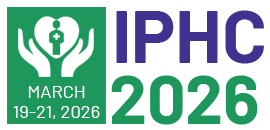Title : Standardising the Process of Establishing the Program Implementation Priority through Socio Behavior Change Analysis A Case Study from Tribal District of Gujarat India
Abstract:
The adolescence period is an intense anabolic period when the requirements for all nutrients increases. The adolescents are more vulnerable to the malnutrition. The food habits and lack of nutritional awareness are considered to be the main factors in determining nutritional status. The nutritional status shows the quality of life and the use of resources depends on the influencing behaviour. Here, the OAM theory had been used which suggests that there are three independent work system components which shapes the research characteristics and also help to contribute the success of the organisation. According to the theory, organisational interests are best served by a system that attends to the areas of research opportunity, ability and motivation (OAM). The OAM framework also clarifies the function and meaning of motivation in theoretical models.
OPPORTUNITY: Relevant constraints, such as the availability of time and resources, also enable the behaviour. Typically, we seek opportunities to complete a task that will result in a benefit to ourselves or to others. The nutritional supplements available with the ANM account for 77.8 percent. But the consumption of IFA tablets account for 14.3 percent. During the pregnancy, the respondent had not consumed the IFA tablets. But she had received the supplementary food from the Anganwadi. The health worker visited one time for the health check-up. And during pregnancy, the respondent also visited the health facility. In few villages, girls are getting the IRON tablets and they are not facing any kind of health problems such as vomiting or indigestion etc. due to tablets. Awareness about anemia is very less.
ABILITY: Abilities are the level of cognitive, emotional, financial, physical or social resources a person can apply to perform a specific behaviour. Around 14 percent of adolescent girls or the respondents between age group 14-17 and 18-19, have no knowledge about the reasons and the consequences of anaemia who were consuming the IFA tablets. There was lack of discussion with mothers’ which accounts for 14 percent. And 15 percent were having lack of discussion with anyone who was consuming the IFA tablets. Whereas 95 percent of adolescent girls were facing lack of discussion with any health personnel, who were non-consumers the IFA tablets. And more than 85 percent of respondents who were non-consumer of IFA tablets, were not attending MAMTA DIWAS or any other discussion forum, exhibition etc. The adolescent girls who were not attending class held specific to them includes 14 percent from consumers of IFA tablets and 86 percent from the non-consumers of IFA tablets. And 3 respondents from IFA consumers and 4 respondents from IFA non-consumers have not heard about any advertisements related with social support.
MOTIVATION: The needs and wants of an individual may influence them to behave in a certain way. Motivation is the incentive for behaviour. Threat (Risk Assessment): 12 respondents who were consumers of IFA tablets were facing lack of understanding of consequences of anemia (mild to moderate) and 78 respondents were the non-consumers of IFA tablets.



